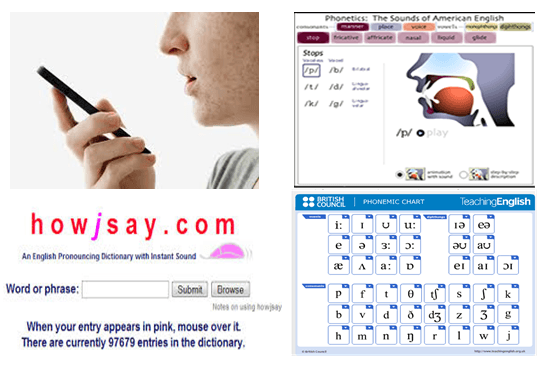IELTS Pronunciation
If you look at the IELTS speaking marking criteria, you will notice that pronunciation makes up 25% of the total marks. In other words, it is difficult get a high band score in your speaking test without good pronunciation.
Many students believe that good pronunciation is the same as having a ‘native English accent’. This is one of the most common misconceptions and students should not worry about having a British or American accent.
According to the marking criteria, it is more important to be:
- easy to understand and
- use a wide range of pronunciation features.
Pronunciation features include:
- Clarity (being easy to understand)
- Sentence Stress (emphasising certain syllables in a sentence)
- Word Stress (emphasising certain syllables in a word)
- Intonation (your voice going up and down in pitch)
- Weak Sounds (understated syllables in sentence, replaced with ‘schwa’)
- Linking Sounds (when two sounds link in a sentence)
This post will discuss the first feature, ‘being easy to understand’ and will focus on helping students with the phonemic chart and pronouncing individual sounds correctly.
Helping IELTS Students with Phonetics
Phonetics is the study of speech sounds and how they are physically made. Producing sounds in any language is more of a physical experience than a mental one. Knowing where to position your tongue, jaw, teeth and lips etc. is crucial to being able to produce the correct sound.
As already discussed, the IELTS examiner will only be able to give high marks for pronunciation, if you are easy to understand. My students have a teacher showing them exactly how to physically make each sound, but this is not possible for many people.
Unfortunately, many IELTS students have not been shown how to produce these sounds effectively and this could lead to them making mistakes and losing marks. Luckily there are lots of online resources that can help students practice these sounds at home and improve their pronunciation.
The Phonemic Chart
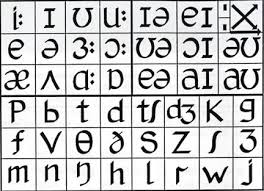
This chart represents all of the sounds in the English language. Unfortunately, it looks very strange when students see it for the first time and they don’t see how it can help them in the speaking test.
British Council Interactive Chart
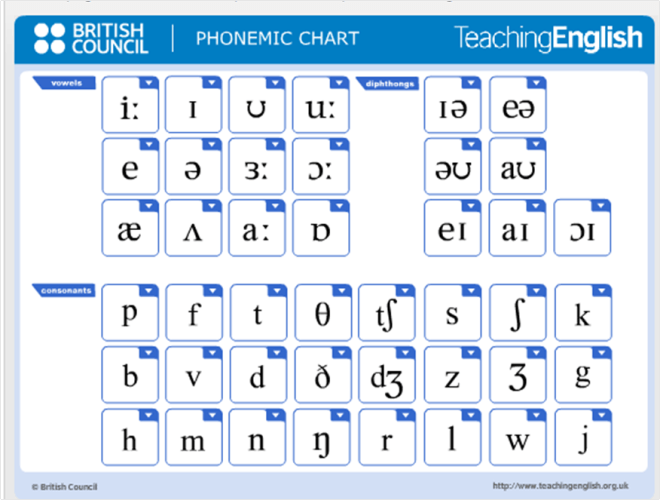
Rather than show them the chart above, use the British Council interactive chart. This chart is far more user friendly and allows the students to hear each sound when they click on the symbols. Each symbol also contains three words that contain the sound so that students can hear the sounds in context.
The problem with English is it is not a phonetic language. This means that the spelling and sound are often different. Think about the words ‘through’ and ‘ought’, they must be very confusing when first encountered by learners.
Many students are unaware that all the words in most online dictionaries are transcribed phonetically i.e. how they sound, rather than how they are spelt. For example, motorbike looks like /məʊ.tə.baɪk/ and through looks like /θruː/. Students can then go back to the phonemic chart and listen to how each sound sounds.
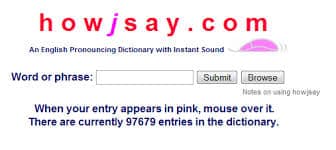
Looking at the words in a dictionary is not enough. It is very important to hear how they sound. Most students would also find it very useful to hear how a native speaker says each word. Howjsay is the World’s largest pronunciation dictionary. Simply type in a word and listen.
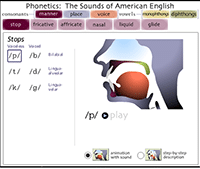
The student now knows the spelling and how the word sounds but the problem now is how to make the sound themselves. This is where Sounds of Speech comes in.
This is the single most powerful tool for students practicing pronunciation at home. It demonstrates each sound as a video, showing how the tongue, jaw, lips, teeth etc. should be positioned. It also shows a real person making each sound. Students can then practice at home in front of a mirror, mimicking the videos.

The final problem for students is checking whether they are making the correct sounds or not. For this we can use free voice recognition software.
There are a number of voice recognition programmes available. Siri is available on the iPhone and Dragon Dictation is a free app for both Apple and Android. Students can say words into these programmes and if they say it correctly, it will write it out. If they get it wrong, then they should go back to the websites above and fix their pronunciation.
Checklist for Students
So with these 5 steps students can become completely independent learners and improve their pronunciation at home. They are also completely free to use.
- Check how the word is spelt on one of the online dictionaries.
- Check how the word sounds on howjsay.com
- Differentiate each sound on the phonemic chart
- Check how to physically make each sound on Sounds of Speech
- Try recording the sound on one of the voice recognition programmes.
If you have any other recommendations for how students can improve their pronunciation, please comment below.
